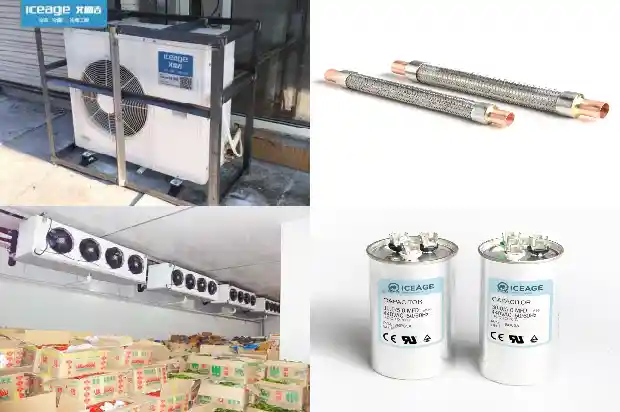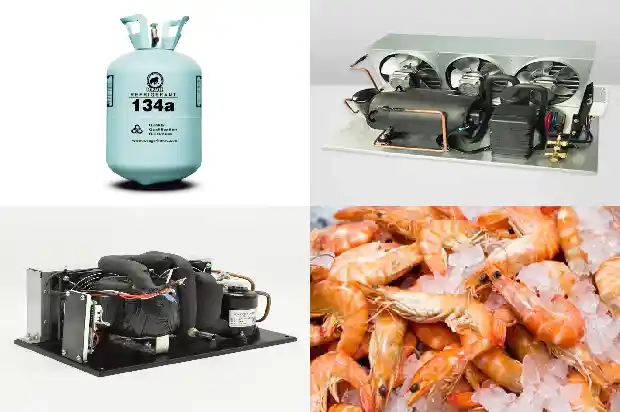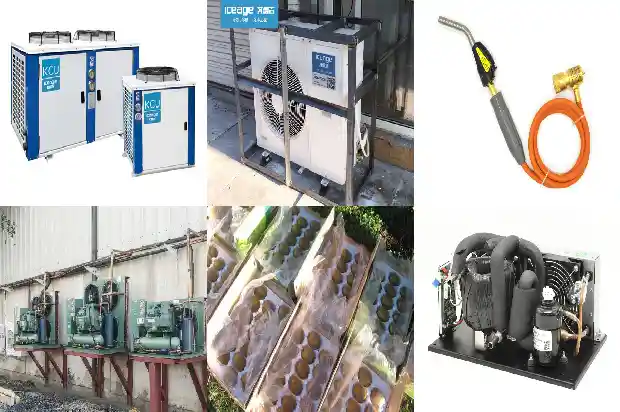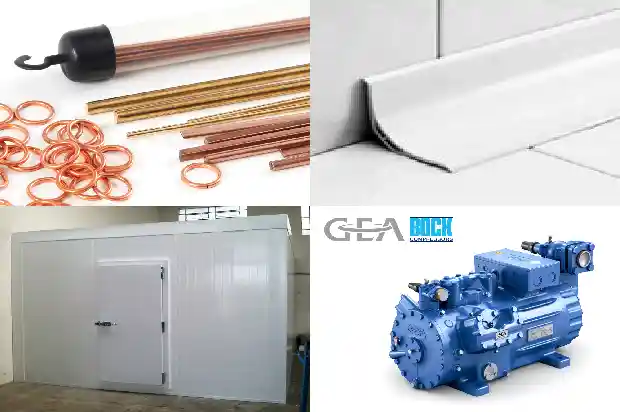You Might Need This Someday! Check Out the Refrigerant Charging Method for Multi - split Systems!
2025-02-26
Refrigerant charging for multi - split systems includes two parts: pre - charging and charging during operation.
I. Refrigerant Charging During Operation
- Close the valve of the refrigerant tank and reconnect the pressure gauge tube. Remove the low - pressure gauge tube from the detection port of the gas pipe valve and connect it to the low - pressure detection valve.
The low - pressure detection valve is an independent valve body. For household multi - split systems, it is also an independent one located in the middle - lower part of the measured air - outlet main unit. For 80, 100, and 112 main units, the detection valve is at the lower - left corner of the side panel. Remove the plug cap, connect the hose, use the refrigerant to expel the air in the hose, open the cap of the stop valve, and use a 5mm Allen wrench to open the valve core. Then you can add refrigerant to the system. Remember to add it quantitatively in liquid form. This method can be used both in winter and summer. Especially when the main unit is in heating mode, this is still a low - pressure area. Observe carefully on - site whether this pipeline is connected to the suction port of the compressor. The switching of the four - way valve to heating mode will not affect the refrigerant addition and low - pressure measurement. - Fully open the liquid pipe valve and gas pipe valve of each module. If it is a modular unit, also open the oil equalizing valve of each module at the same time.
- Operate through the debugging software or the outdoor unit main board to make the whole machine enter the debugging operation.
- When the debugging step reaches the refrigerant charging part, open the valve of the refrigerant tank and continue to charge the remaining amount of refrigerant.
- After all the refrigerant is charged, close the valve of the refrigerant tank and wait for the automatic debugging of the whole machine to be completed.

- After the debugging is completed, remove the pressure gauge, etc., and finish the refrigerant charging work.
II. Refrigerant Pre - charging
- Connect the high - pressure gauge tube of the pressure gauge to the detection port of the liquid pipe valve, the low - pressure gauge tube to the detection port of the gas pipe valve, and the middle gauge tube to the vacuum pump.
Power on the vacuum pump for vacuum drying.
- After the vacuum drying is completed, close the high - pressure gauge valve and the low - pressure gauge valve. Remove the connection end of the middle gauge tube and the vacuum pump, and then connect the refrigerant tank.

- Loosen the connection end of the middle gauge tube and the pressure gauge appropriately, slightly open the valve of the refrigerant tank, and evacuate the middle gauge tube. After completion, tighten the connection again and fully open the valve of the refrigerant tank at the same time.
- If the refrigerant tank does not have a siphon tube itself, then invert the refrigerant tank and place it on the electronic scale, and record the current weight m1; if the refrigerant tank has a siphon tube itself, keep the refrigerant tank in an upright state and also record the current weight m1.
(Currently, all R410a refrigerants on the market have cancelled the siphon tube.) - Open the high - pressure gauge valve (keep the low - pressure gauge valve closed) and start to charge the refrigerant into the system. At the same time, record the weight change of the refrigerant tank.
- When all the refrigerant in the refrigerant tank is charged and no more can be charged into the system pipeline, record the current weight m2.
- Close the high - pressure gauge valve and replace the refrigerant tank.

- Repeat "Step 3".
- Repeat "Step 5" and "Step 6", and record the weight m3 before charging and the weight m4 after charging.
- If the refrigerant cannot be continuously charged into the system and the calculated additional refrigerant amount has not been fully charged into the system, then record the current total pre - charged amount:
m = (m1 - m2)+(m3 - m4)+…+(mn - 1 - mn)
The remaining amount of refrigerant to be charged during operation is m = M - m
M is the total calculated charging amount.
If the pre - charged refrigerant amount m has reached the total additional refrigerant amount of the system at this time, immediately close the valve of the refrigerant tank to complete the charging work. - After completing the charging, remove the pressure gauge, etc.
Related Articles
- How to Check Refrigerant Leakage in Air Conditioning System?
- Air Conditioner Repair Techniques: "Touch, Look, Listen, Check, Analyze"
- Types of Refrigerants and Leak - detection Methods
- What to Consider When Replacing R22 with Refrigerant R404A?
- Introduction to Inspection and Handling Methods for Refrigerant Leak in Cold Storage
- Four Combustible and Explosive Refrigerants: Precautions When in Use!
- Characteristics and Differences among Water System, Air System and Refrigerant System
- How to Judge the Refrigerant Charge Amount?
- How to Properly Extract Ammonia Refrigerant during Refrigeration Parts Repair
- Operating Principle and Standard Installation Steps of Multi - split Systems in Refrigerant Air - conditioning Systems
- Sensor for Refrigerant Leak Detection in Cold Chain Transportation
- Why Should Refrigerant Be Filled in Liquid Form? What Are the Filling Methods?
- What are the Cooling and Heating Pressures of an Air Conditioner? How to Calculate the Optimal Refrigerant Quantity?
- Maintenance Methods for Refrigerant Leak in Air - conditioner Outdoor Unit
- Operations and Precautions for Multi - split Air Conditioners: Blowing Debris, Air Tightness, Vacuum Drying, and Refrigerant Charging
- Multi-split air conditioner: Nitrogen charging for welding, pressure maintaining, vacuuming and refrigerant charging
- What Sensors Are Used for Leak Detection of R1234yf, the New Generation of Environmentally Friendly Refrigerant?
- Scheme for the Use and Safety of Ammonia Refrigerants
